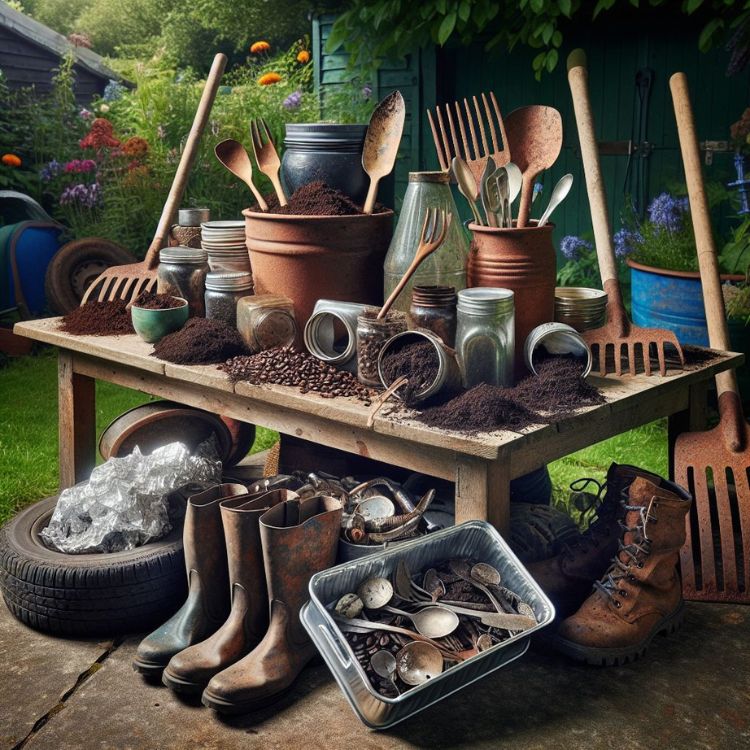
Article-at-a-Glance
-
Discover how to turn kitchen scraps into compost gold for your garden.
-
Learn the art of using aluminum foil to keep pests at bay.
-
Explore inventive ways to upcycle old furniture into functional garden structures.
-
Uncover the benefits of using aquarium water as a nutrient-rich plant tonic.
-
Find out how common household items can become innovative plant supports.
Gardening is not just about planting seeds and watching them grow; it’s about creativity, resourcefulness, and sometimes, a little bit of unconventional wisdom. Today, I’m going to share some of the most surprising and effective ways you can repurpose common household items to benefit your garden. You’ll never look at your trash the same way again!
Unlock the Hidden Potential: Everyday Garden Wonders
Most of us have a wealth of garden resources lying around our homes without even realizing it. With a bit of ingenuity, these everyday items can be transformed into valuable tools that support plant growth, deter pests, and add a touch of whimsy to our garden spaces.
Repurpose with Purpose: Meet Your Garden Allies
Think twice before tossing out those seemingly useless items. Old shoes, broken pots, and even chipped cups can find new life in the garden. Let’s turn what you might consider waste into something wonderful for your green haven.
Sustainability Meets Innovation: Dual-purpose Items
Sustainability isn’t just a buzzword; it’s a practical way to garden. By finding a second use for items, we not only save money but also reduce our ecological footprint. From newspaper mulch to repurposed watering cans, the possibilities are endless.
From Kitchen to Compost: Nutrient-Rich Additions
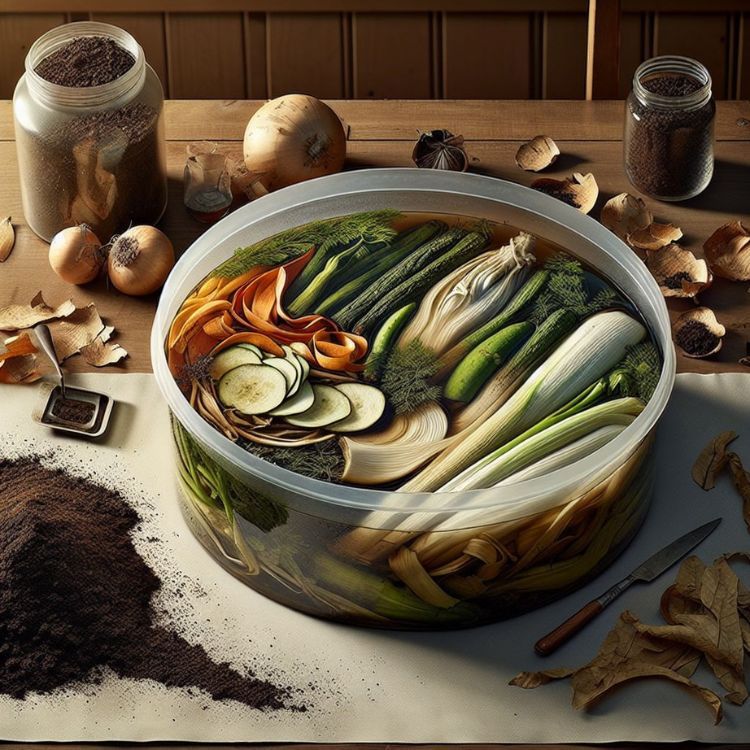
Your kitchen is a treasure trove of garden supplements. Many scraps you throw away are packed with nutrients that can give your plants a boost. Let’s dig into how you can convert waste into wonder.
Vegetable Water: Liquid Gold for Plants
After boiling vegetables, don’t pour the water down the drain. Instead, let it cool and use it to water your plants. The nutrients leached from the veggies into the water act like a natural fertilizer, giving your plants an extra dose of goodness. Learn more about how recycled gray water can boost your plant growth.
Coffee Grounds: An Acidic Boost for Flower Beds
Coffee grounds are more than just the remnants of your morning brew. These gritty leftovers are rich in nitrogen, which is essential for plant growth. Sprinkle them around acid-loving plants like azaleas or blueberries for a happy garden.
Create a Pest-Free Haven: Natural Deterrents
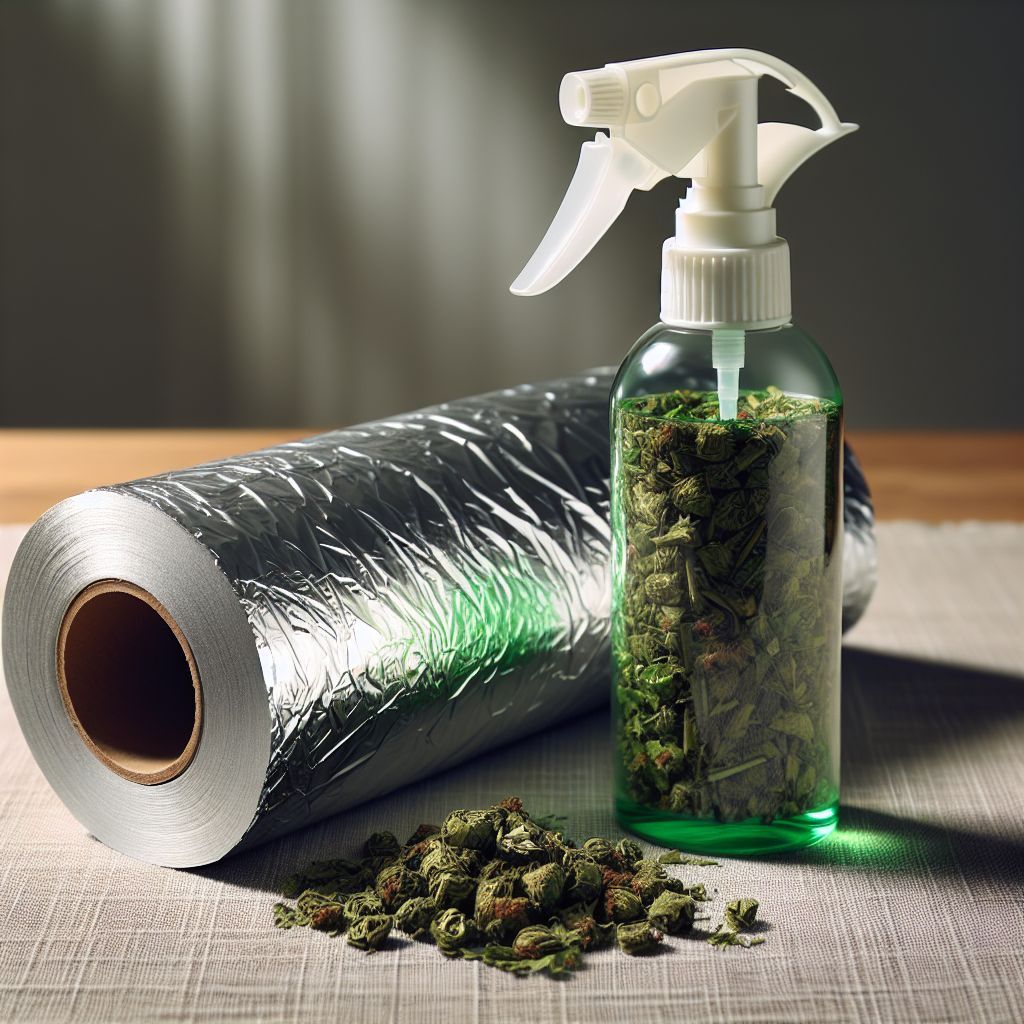
One of the challenges of gardening is dealing with unwanted visitors. But before you reach for chemical solutions, consider these natural deterrents that are kinder to the environment and just as effective.
Aluminum Foil Tricks to Scare Pests Away
A little shine can go a long way in keeping pests at bay. Reflective surfaces disorient and deter many types of insects. Try wrapping strips of aluminum foil around plant stems or hanging twisted pieces from branches to keep your garden pest-free.
Spice It Up: Using Herbs as Insect Repellants
Herbs are not only great for cooking; they can also protect your garden. Planting herbs like basil, lavender, and mint among your vegetables can help repel insects naturally, thanks to their strong scents.
DIY Garden Structures: Unconventional Builders
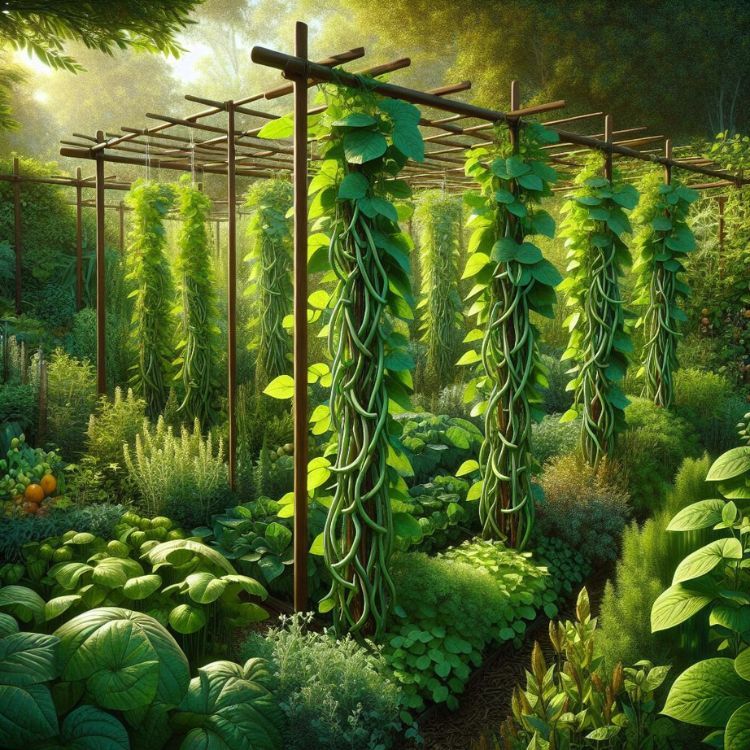
Structures are essential in a garden for supporting plants, creating shade, and even adding aesthetic appeal. But who says you need to buy new materials? Let’s turn old items into new opportunities for your garden.
Building Bean Towers: Reimagining Old Furniture
Have an old chair or bookshelf that’s seen better days? Don’t throw it out—transform it into a climbing support for beans or peas. Just stand it in the garden, secure it well, and let your plants weave their magic.
Repurposed Trellises: Ladders to New Heights
An old ladder can serve as an excellent trellis for climbing plants. Lean it against a wall or fence, and voilà, you’ve got a functional and decorative plant support. It’s a simple solution that’s both practical and charming. For more ideas on how to utilize trellises in your garden, check out these effective trellis techniques.
Now that you’ve got a taste of the creative possibilities, are you ready to dive in and transform your garden with these unexpected item uses? Remember, every item in your home has the potential to become a garden treasure. Let’s keep exploring and see what other surprises we can find.
Water-Wise Gardening: Unexpected Reservoirs
Water conservation is not only good for the environment but also for your garden. By using items you already have, you can create systems that save water and nourish your plants. Let’s tap into some ingenious ways to make every drop count.
Harvesting Rain: Buckets as Catchment Systems
-
Place buckets or barrels under downspouts to collect rainwater.
-
Use a screen to keep out debris and mosquitoes.
-
Connect several containers with hoses for extra storage capacity.
By capturing rainwater, you’re not just saving on your water bill; you’re providing your plants with a natural water source that’s free from the chemicals often found in tap water.
Moreover, plants thrive on the slightly acidic pH of rainwater, and it’s soft water, which is better for both plants and soil. So, next time the skies open up, remember that those buckets are more than just receptacles; they’re your garden’s new best friend.
Aquatic Upcycling: Aquarium Water for Nutrient Supply
When you clean your fish tank, instead of dumping the old water, use it to water your plants. The waste from the fish adds beneficial bacteria and nutrients to the soil, acting as a natural fertilizer.
This method is especially good for leafy plants and vegetables that thrive on nitrogen. Just be sure not to use water from saltwater tanks, as the salt can harm your plants.
Breathing New Life into Old Tools: Innovative Plant Supports
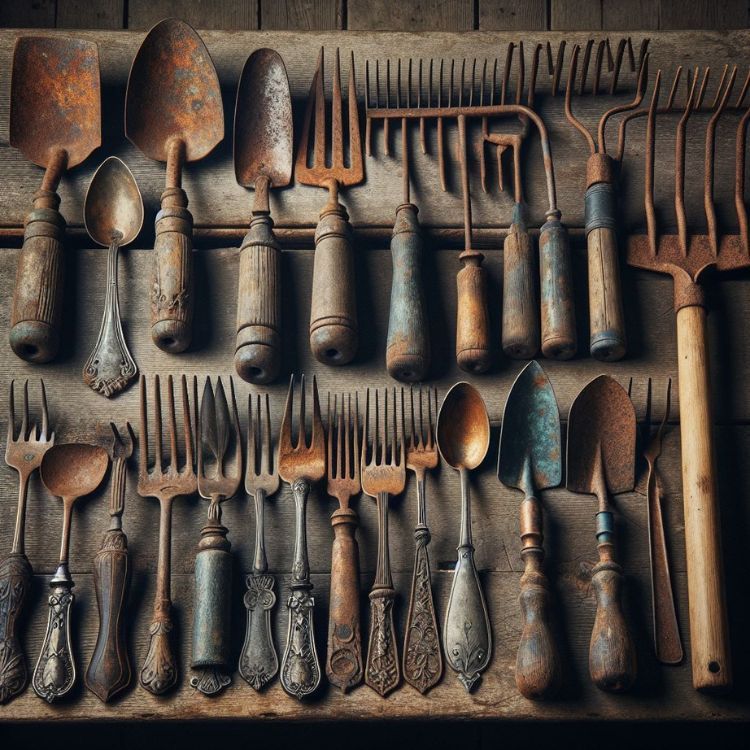
Old tools don’t need to rust away in the shed. They can have a second act as sturdy supports for your growing plants. Here’s how to give those old tools new purpose.
Bent Spoons and Forks: Quirky Plant Stakes
Old silverware can be bent and stuck into the soil to provide support for small plants. It’s a quirky twist that adds character to your garden while being utterly practical.
Rusty Rakes as Climbing Aids for Vines
Don’t let that rusty old rake go to waste. Remove the handle and push the head into the ground to serve as a rustic trellis for climbing plants like sweet peas or morning glories.
Its prongs are perfect for vines to wrap around, and it adds a charming touch of farmhouse chic to any garden.
Care and Nourish with Unusual Inputs
Feeding your garden doesn’t always require a trip to the garden center. Sometimes, the best fertilizers are the ones you’d least expect, and they’re already within your reach.
Unexpected Fertilizers: From Fish Tank to Flower Bed
Aquarium gravel, after being used in a fish tank, can be cleaned and mixed into potting soil. The gravel is rich in beneficial bacteria and can improve soil drainage, making it a fantastic addition to your garden beds.
It’s a great way to repurpose something that would otherwise be thrown away, and your plants will thank you for it.
“Don’t overlook the power of your aquarium’s ecosystem; it’s a goldmine for your garden!”
Feeding Foliage with Fabric: Old Clothes as Compost
-
Cut natural fiber clothing into small pieces.
-
Layer them with kitchen scraps and yard waste in your compost bin.
-
Turn the compost regularly to help it break down evenly.
Composting old clothes made of natural fibers like cotton, wool, or linen is a fantastic way to reduce waste and create rich soil. The key is to ensure the fabric is 100% natural, as synthetic fibers won’t break down properly and can contaminate your compost.
Remember, the smaller you cut the pieces, the faster they’ll decompose. And as they break down, they’ll add valuable organic matter to your compost, which in turn will nourish your garden.
Maximize Your Space: Inventive Planters
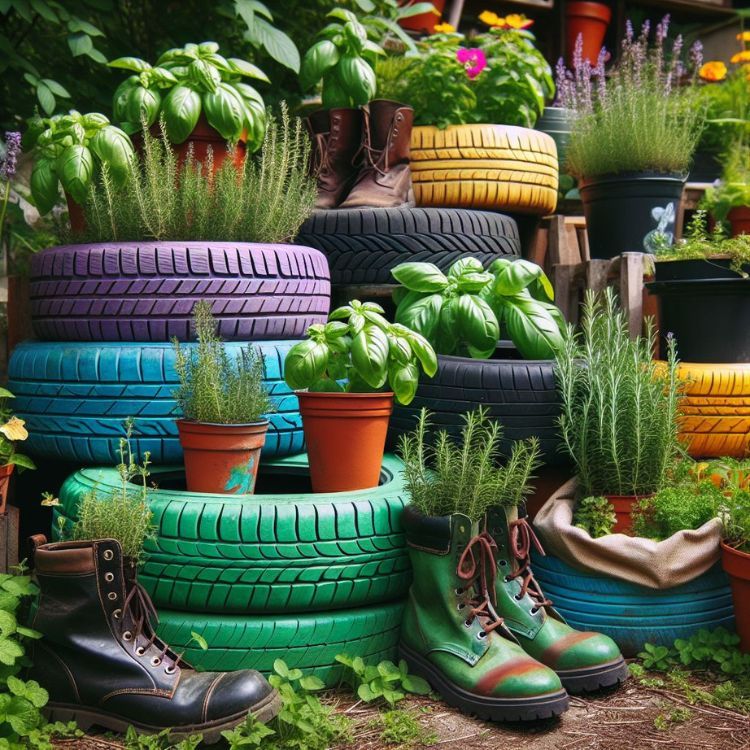
Small space? No problem. With a little creativity, you can find planters in the most unexpected places, turning cramped corners into lush landscapes.
Boots and Bags: Funky Containers for Herbs
Old boots and bags make excellent planters for herbs and small flowers. Just fill them with soil, plant your seeds, and enjoy the whimsical look. Make sure to punch holes for drainage to keep your plants happy.
These unique planters not only save space but also add a touch of personality to your garden. Plus, they’re a great conversation starter when friends come over to admire your green thumb.
Polishing Plant Aesthetics with Painted Tire Planters
Have some old tires lying around? Don’t let them go to waste. With a splash of paint and a bit of soil, you can transform them into vibrant planters that make a statement. Here’s how:
-
Clean the tires and give them a coat of outdoor paint in your favorite color.
-
Once dry, stack them to your desired height, fill with soil, and plant away.
-
These tire planters are perfect for flowers, herbs, or even small vegetables.
Not only do they add a pop of color to your garden, but they’re also a durable and eco-friendly way to upcycle. Plus, their round shape can create a visually pleasing pattern in your garden layout.
Enhance Garden Health: Home Remedies
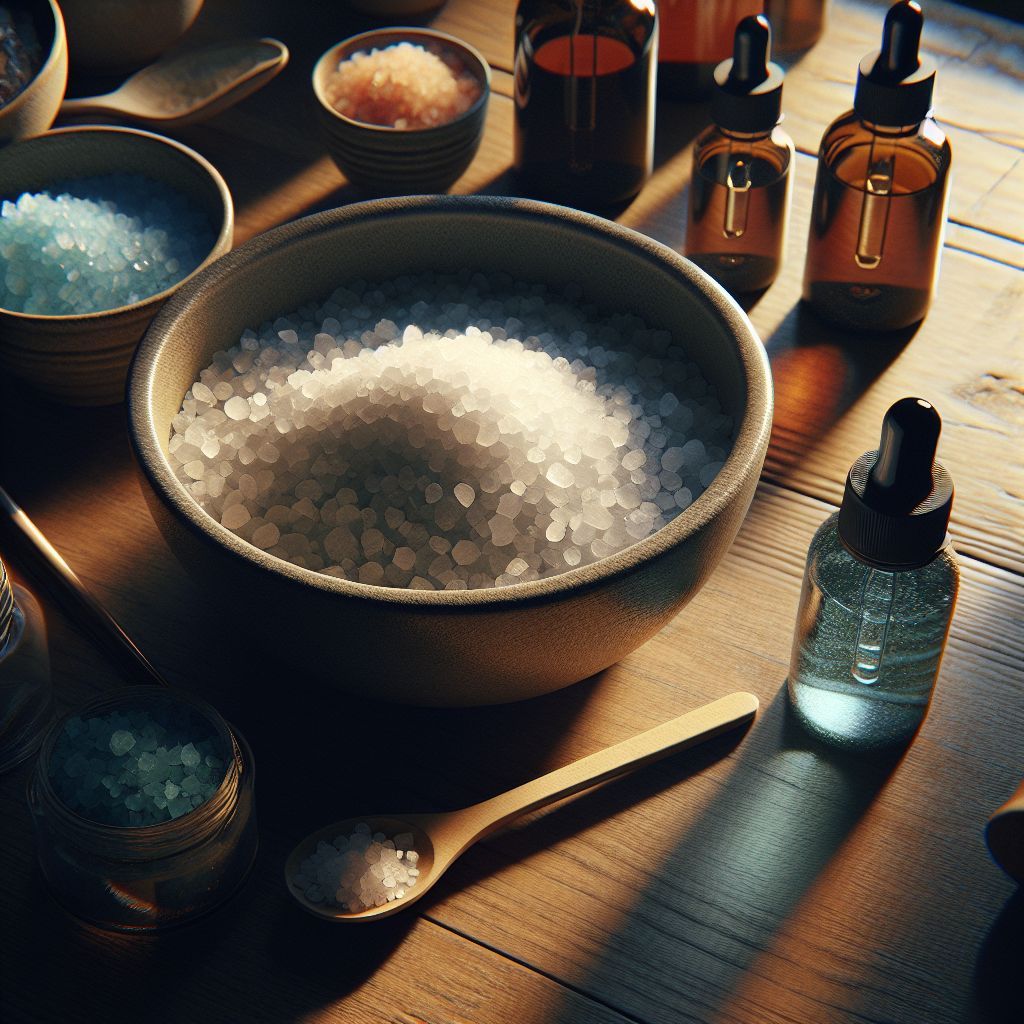
Your garden’s health is paramount, and sometimes the best remedies are the ones you whip up at home. Here are a couple of home-made solutions that can bolster your garden’s wellbeing.
Epsom Salt Solutions for Healthier Greens
Epsom salt, a common household item, is a fantastic source of magnesium and sulfate, two nutrients that are crucial for plant health. Here’s how to use it:
-
Mix a tablespoon of Epsom salt into a gallon of water.
-
Use this solution to water your plants every few weeks to encourage lush green growth and bountiful blooms.
This simple addition can make a world of difference, especially for plants that are prone to magnesium deficiency, such as tomatoes and roses.
Milk Magic: Fighting Fungi with a Dairy Delight
Milk isn’t just for cereal—it can also be a fungicide in the garden. Dilute milk with water in a 1:9 ratio and spray it on your plants to combat fungal diseases. This method is especially effective against powdery mildew on cucumbers and squash.
Why does it work? The proteins in milk can help boost your plants’ immune systems, making them more resistant to disease. Plus, it’s a safe, natural alternative to chemical fungicides.
Frequently Asked Questions
Got questions? You’re not alone. Here are some common queries from fellow garden enthusiasts, answered to help you get the most out of your garden.
Can I really use old shoes as planters?
Absolutely! Old shoes, especially boots, can be given a new lease on life as planters. Just make sure to add some drainage holes at the bottom, fill them with potting mix, and you’re all set. They’re perfect for succulents or annuals and add an unexpected twist to your garden décor.
How does aluminum foil deter garden pests?
Aluminum foil’s reflective surface can disorient and scare away many types of insects. Moreover, when mixed into the garden soil, it can deter soil pests and even reflect light up to your plants, giving them a bit of extra sunshine.
Is it safe to use aquarium water on all plants?
Generally, yes, especially if it’s from a freshwater tank. Aquarium water is rich in nitrogen and other nutrients, making it great for watering plants. However, avoid using water from saltwater tanks, as the salt content can harm plants.
What are the benefits of using coffee grounds in the garden?
Coffee grounds can help improve soil structure, add organic matter, and provide your plants with nutrients like nitrogen, potassium, and magnesium. They’re particularly good for acid-loving plants and can help attract beneficial worms to your garden.
How do I turn kitchen waste into compost?
Composting kitchen waste is simple:
-
Start with a compost bin or designated area in your yard.
-
Add a mix of green waste (like vegetable scraps) and brown waste (like dried leaves).
-
Keep the pile moist and turn it regularly to aerate it and speed up the decomposition process.
In a few months, you’ll have rich, homemade compost to enrich your garden beds!
With these unexpected uses for common items, your garden will not only be more productive but also more personal and creative. Remember, gardening is an art form limited only by your imagination. So, why not start today? Look around your home for items you can repurpose, and Get Started on your journey to a more sustainable and inventive garden. Your plants—and the planet—will thank you.






